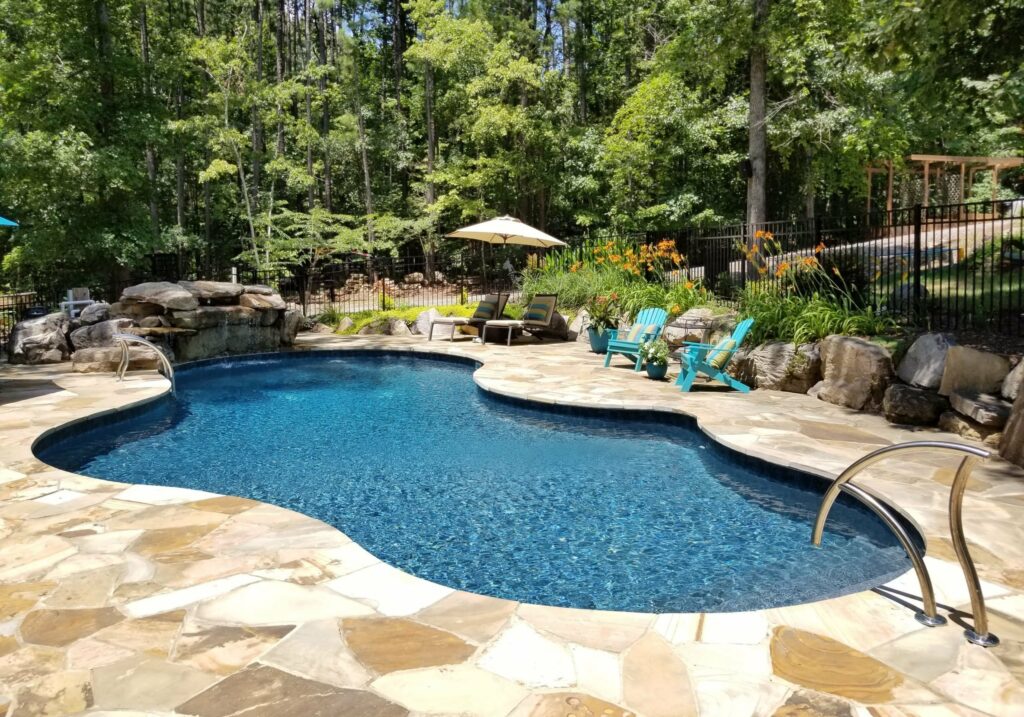
Having a swimming pool in your backyard can be a great way to beat the summer heat and entertain friends and family. Inground pools, in particular, are a popular choice for homeowners who want a pool that is built into the ground and can be customised to their liking. However, like any major home renovation, inground pools come with both advantages and disadvantages. In this article, we will discuss the pros and cons of inground pools to help you make an informed decision.
Advantages of Inground Pools:
Customisable
Inground pools offer more flexibility when it comes to design and customisation. You can choose the shape, size, and depth of the pool to suit your needs.
Durability
Inground pools are built to last and can withstand harsh weather conditions. They are made with durable materials such as concrete, fibreglass, or vinyl liner.
Increase Home Value
A well-designed inground pool can significantly increase the value of your home. It can also make your property more attractive to potential buyers if you decide to sell in the future.
Aesthetic Appeal
Inground pools add a touch of luxury to any backyard. They can be designed to blend seamlessly with your landscaping and enhance the overall aesthetic appeal of your property.
Privacy
Unlike public pools, an inground pool in your backyard provides a high level of privacy. You can enjoy a swim without worrying about crowds or strangers.
Disadvantages of Inground Pools:
Cost
Inground pools are expensive to install and maintain. The cost can range anywhere from $30,000 to $100,000, depending on the type of pool and the features you choose.
Time-consuming
Installing an inground pool can take several weeks to several months, depending on the complexity of the project. This means your backyard will be a construction zone for a considerable amount of time.
Maintenance
Inground pools require regular maintenance, including cleaning, chemical balancing, and repairs. This can be time-consuming and costly.
Safety Concerns
Inground pools can pose safety risks, especially if you have children or pets. You will need to take additional safety measures such as installing a fence or pool cover.
Limited Mobility
Unlike above-ground pools, inground pools are fixed in place and cannot be moved. This means you cannot take the pool with you if you move to a new home.
FAQ
Q: Which type of inground pool is the best?
A: The best type of inground pool depends on your budget, design preferences, and climate. Concrete pools are the most durable, while fibreglass pools are low-maintenance. Vinyl liner pools are the most affordable option.
Q: How long does it take to install an inground pool?
A: The installation time varies depending on the type of pool, the size of the project, and the weather conditions. On average, it takes 6-8 weeks to install an inground pool.
Q: Can I install an inground pool myself?
A: Installing an inground pool is a complex and labour-intensive project that should be left to professionals. Attempting to install a pool yourself can result in costly mistakes and safety hazards.
Conclusion
Inground pools have their advantages and disadvantages. They offer customizability, durability, and increased home value, but also come with a high cost and maintenance requirements. Before deciding to install an inground pool, it’s important to weigh the pros and cons carefully and consider your budget, lifestyle, and safety concerns.
With careful consideration and planning, an inground pool can be a wonderful addition to your backyard that provides years of enjoyment and relaxation. Be sure to work with a reputable pool contractor and follow all safety guidelines to ensure a safe and enjoyable swimming experience for you and your loved ones. Ultimately, the decision to install an inground pool is a personal one that should be based on your individual needs and preferences.
